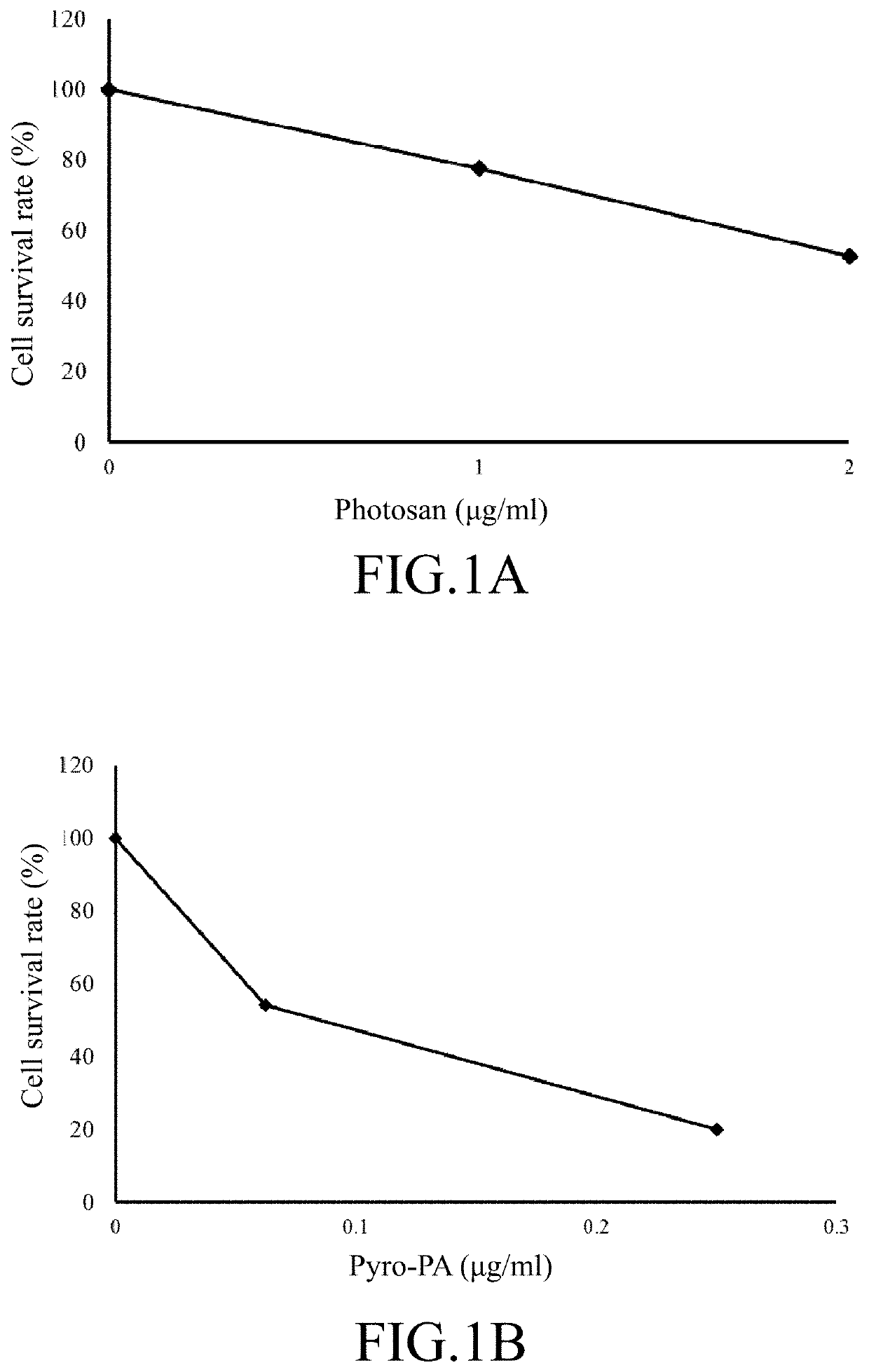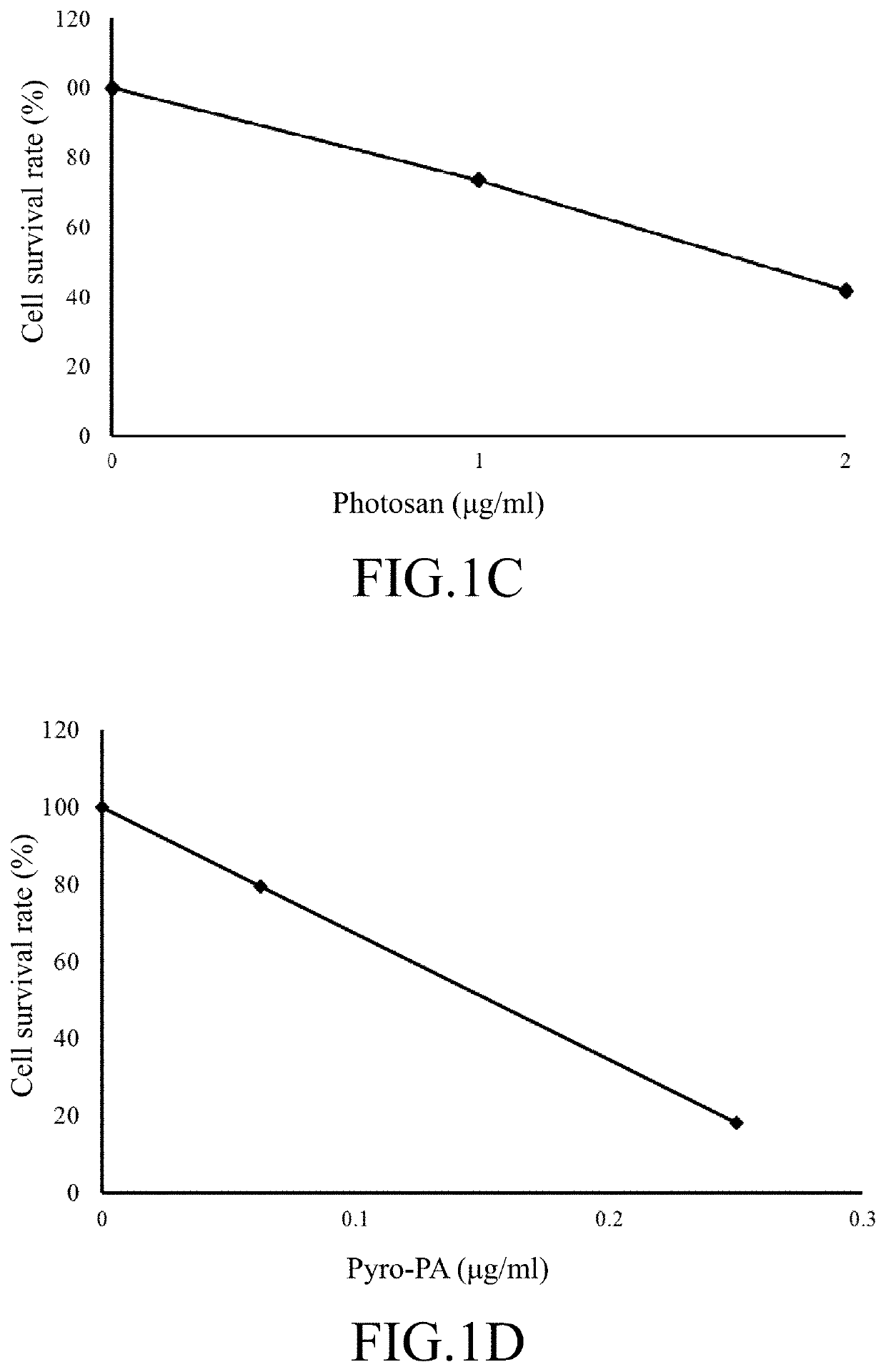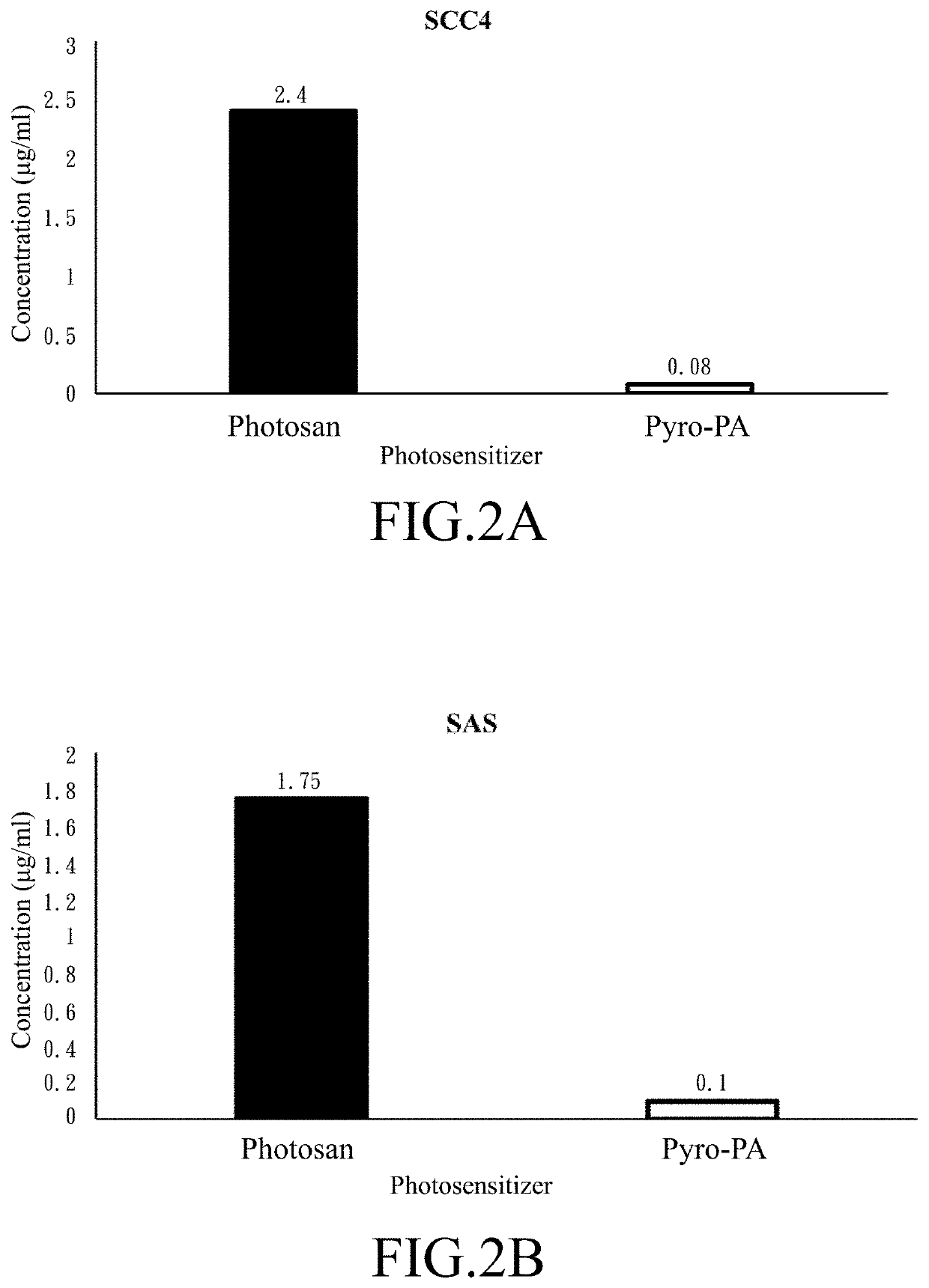Nucleic acid, medical nanoparticle, and pharmaceutical composition thereof
a technology of nanoparticles and nucleic acids, applied in the direction of pharmaceutical delivery mechanisms, organic active ingredients, biochemistry apparatus and processes, etc., can solve the problems of increasing the difficulty of cancer precaution and therapy, increasing the difficulty of cancer treatment, and inability to provide expected results, so as to improve the therapeutic effect, suppress the growth of cancer cells, and promote the death of cancer cells
- Summary
- Abstract
- Description
- Claims
- Application Information
AI Technical Summary
Benefits of technology
Problems solved by technology
Method used
Image
Examples
first experimental example
fferent Photosensitizers
[0102]FIGS. 1A and 1B respectively illustrate curves show the survival rates of the SCC4 cells treated by photosan molecules and pyro-PA molecules. From the equations of the curves, the concentration of 50% inhibition (IC50) can be calculated. The result shows that, the IC50 of photosan for SCC4 cells is 2.4 microgram per milliliter; conversely, the IC50 of pyro-PA for SCC4 cells is 0.8 microgram per milliliter.
[0103]Similarly, after the SAS cells are treated by the photosan molecules (as shown in FIG. 1C) and the pyro-PA molecules (as shown in FIG. 1D), the IC50 of photosan for SAS cells is 1.75 microgram per milliliter, while the IC50 of pyro-PA for SAS cells is 0.1 microgram per milliliter.
[0104]In FIGS. 2A and 2B, the results are further summarized for showing the difference of the killing performances between the two photosensitizers. From the figures, in SCC4 cells, the IC50 of photosan for SCC4 cells is 2.4 microgram per milliliter, while the IC50 of p...
second experimental example
[0106]After the pyro-PA molecules are confirmed as the photosensitizer in the nanoparticles, in the second experimental example, the optimum capsulated amounts of the EGFR siRNA and the pyro-PA molecule are analyzed.
[0107]As shown in FIGS. 4A to 4C, the nanoparticles capsulating EGFR siRNAs in 2 milligrams per milliliter and photosensitizers in 32 milligrams per milliliter cannot form spherical particles stably (as shown in FIG. 4A). Conversely, the nanoparticles capsulating EGFR siRNAs in 2 milligrams per milliliter and photosensitizers in 16 milligrams per milliliter (as shown in FIG. 4B), and the nanoparticles capsulating EGFR siRNAs in 1 milligram per milliliter and photosensitizers in 16 milligrams per milliliter (as shown in FIG. 4C) can form spherical particles stably.
[0108]The result shows the maximum capsulating amount of the nanoparticle is siRNAs in 2 milligrams per milliliter and photosensitizers in 16 milligrams per milliliter. Following experimental examples are analyz...
third experimental example
icles
[0109]After the nanoparticles having the maximum capsulating amount are prepared, the transmission electron microscope is provided for analyzing the size of the nanoparticles.
[0110]As shown in FIGS. 5A to 5F, the average diameter of the core capsulating EGFR siRNAs (including the inner lipid layer) is 11.1±3.1 nm (as shown in FIG. 5A), the average diameter of the nanoparticle capsulating EGFR siRNAs is 34.9±3.0 nm (as shown in FIG. 5B), the average diameter of the core capsulating the pyro-PA molecules (including the inner lipid layer) is 9 to 12 nm (as shown in FIG. 5C), and the average diameter of the nanoparticle capsulating the pyro-PA molecules is 15 to 20 nm (as shown in FIG. 5D). The average diameter of the core capsulating EGFR siNRAs and the pyro-PA molecules (including the inner lipid layer) is 9 to 12 nm (as shown in FIG. 5E), and the average diameter of the nanoparticle capsulating EGFR siNRAs and the pyro-PA molecules is 20 nm (as shown in FIG. 5F).
PUM
| Property | Measurement | Unit |
|---|---|---|
| wavelength | aaaaa | aaaaa |
| wavelength | aaaaa | aaaaa |
| wavelength | aaaaa | aaaaa |
Abstract
Description
Claims
Application Information
 Login to View More
Login to View More - R&D
- Intellectual Property
- Life Sciences
- Materials
- Tech Scout
- Unparalleled Data Quality
- Higher Quality Content
- 60% Fewer Hallucinations
Browse by: Latest US Patents, China's latest patents, Technical Efficacy Thesaurus, Application Domain, Technology Topic, Popular Technical Reports.
© 2025 PatSnap. All rights reserved.Legal|Privacy policy|Modern Slavery Act Transparency Statement|Sitemap|About US| Contact US: help@patsnap.com



